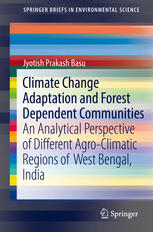

Most ebook files are in PDF format, so you can easily read them using various software such as Foxit Reader or directly on the Google Chrome browser.
Some ebook files are released by publishers in other formats such as .awz, .mobi, .epub, .fb2, etc. You may need to install specific software to read these formats on mobile/PC, such as Calibre.
Please read the tutorial at this link. https://ebooknice.com/page/post?id=faq
We offer FREE conversion to the popular formats you request; however, this may take some time. Therefore, right after payment, please email us, and we will try to provide the service as quickly as possible.
For some exceptional file formats or broken links (if any), please refrain from opening any disputes. Instead, email us first, and we will try to assist within a maximum of 6 hours.
EbookNice Team

Status:
Available4.6
12 reviewsThis book addresses the livelihood impacts of climate change, vulnerability and adaptation measures on the forest dependent communities of India. Research presented here focuses on three different agro-climatic areas of West Bengal, namely the coastal Sundarban, the drought-prone region and the mountainous region. Readers will discover the main climate induced vulnerabilities that affect livelihoods of forest communities, understand how to evaluate the expected impacts of climate change at different levels under different climate change scenarios, and be able to assess and measure the implied major social, environmental and economic impacts.
Particular attention is also given to the role of the Indian governmental policy (including national forest policy of 1988) to reduce climate-related vulnerabilities. Chapters also highlight two main approaches to vulnerability assessment in socio-ecological systems. The first is the impact-based approach, which assesses the potential impacts of climate change on forest dependent people. The second is the vulnerability-based approach, which assesses social sensitivity and adaptive capacity to respond to stresses. Development practitioners, government implementing agencies, and researchers in environmental science and policy will find this book appealing.